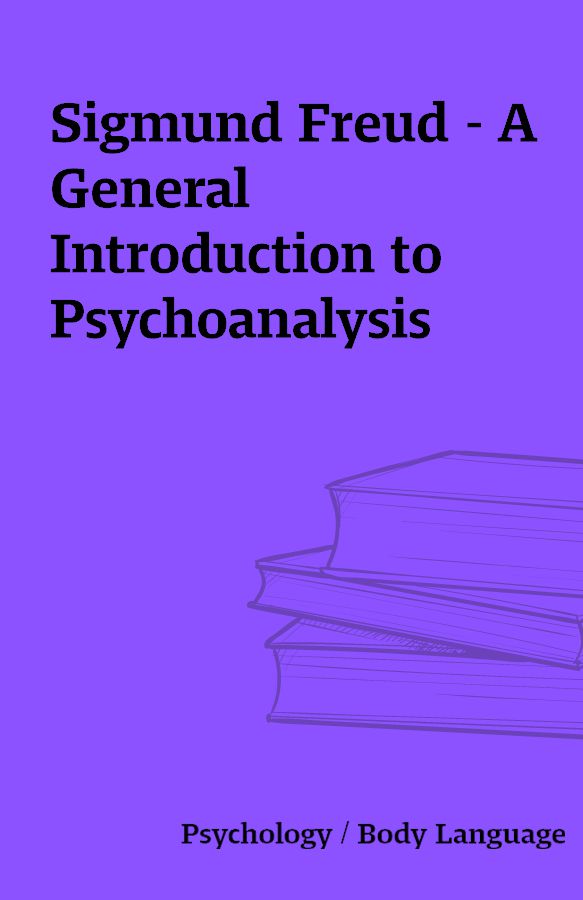Sigmund Freud – A General Introduction to Psychoanalysis
Sigmund Freud – A General Introduction to Psychoanalysis
[Audiobook – 29 MP3]
Description
Freud’s timeless lectures on psychoanalytic thought, dream interpretation, and his theory of the neuroses are presented here in their authoritative translation to English by G. Stanley Hall.First delivered and published between 1915 and 1917, these lectures see a mature Freud expound on his theories and practices which at the time were revolutionary. While generally outdated in the modern setting, the methods detailed were valuable as a benchmark upon which future psychologists and psychiatrists built in subsequent years.Designed to introduce the enthusiastic layman to the psychoanalytic techniques Freud spent decades developing and refining, A General Introduction to Psychoanalysis ranges across several key tenets of Freudian thought. Several lectures concern the means by which dreams may be interpreted as an insight into the state of the patient’s psyche, with symbols and distant memories particularly cited.The latter lectures see Freud discuss aspects of his theories of neurosis; various manifestations of mental disorder, their causes and the means by which they are identified and treated, are detailed. Freud is careful to differentiate between the normal realms in which the mind operates – such as in everyday fears and anxieties – and the point at which mental illness and malady is considered to have surfaced.In the context of dreams and neurosis, Freud relates the sexual impulses and his opinions that the drive for sex has a great bearing on the individual’s state of mind. The notion of healthy human development, and the contrasts between it and the abnormal psyche, form a constant thread through all twenty-eight of these lectures.BiographySigmund Freud was born in 1856 in Moravia; between the ages of four and eighty-two his home was in Vienna: in 1938 Hitler’s invasion of Austria forced him to seek asylum in London, where he died in the following year.His career began with several years of brilliant work on the anatomy and physiology of the nervous system. He was almost thirty when, after a period of study under Charcot in Paris, his interests first turned to psychology, and another ten years of clinical work in Vienna (at first in collaboration with Breuer, an older colleague) saw the birth of his creation, psychoanalysis. This began simply as a method of treating neurotic patients by investigating their minds, but it quickly grew into an accumulation of knowledge about the workings of the mind in general, whether sick or healthy. Freud was thus able to demonstrate the normal development of the sexual instinct in childhood and, largely on the basis of an examination of dreams, arrived at his fundamental discovery of the unconscious forces that influence our everyday thoughts and actions.Freud’s life was uneventful, but his ideas have shaped not only many specialist disciplines, but the whole intellectual climate of the last half-century.
You must be logged in to post a review.






Reviews
There are no reviews yet.